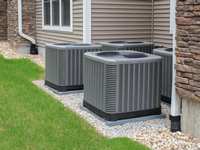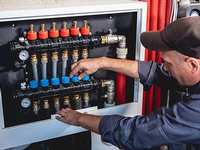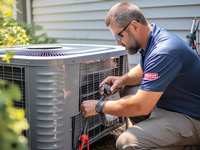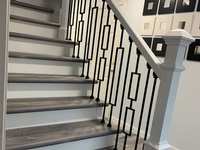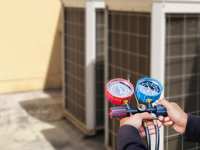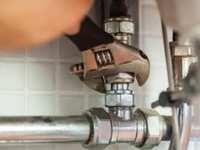Get Comfortable with Zoned HVAC for Home Temperature Control
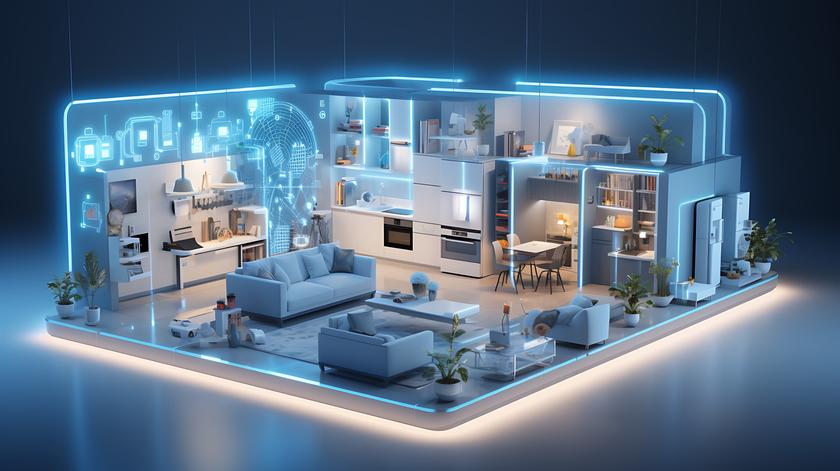
A zoned HVAC system is an innovative way to heat and cool your home more efficiently. By dividing your home into separate temperature zones, zoned HVAC gives you better control over the environment in each room. If you're tired of some rooms being too hot and others too cold, it may be time to consider zoning.
- What is Zoned HVAC?
Zoned HVAC, also known as zoning, is a heating and cooling system that allows you to customize temperatures based on usage and occupancy patterns. It works by separating your home into distinct zones, each with a thermostat and climate control.
The key components of a zoned system include:
- Multiple Thermostats (One For Each Zone)
- Motorized Dampers In The Ductwork To Regulate Airflow
- A Central Control Panel To Coordinate Communication Between Thermostats And Dampers
The thermostats enable you to set different temperature ranges depending on your needs. For example, you may want the bedrooms cooler at night while the living room remains warmer. The programmed settings communicate with the control panel, which opens and closes dampers accordingly to direct airflow only where needed.
How Does HVAC Zoning Work?
In a zoned system, your home is divided into two or more zones, with an individual thermostat controlling each one. When you adjust the thermostat, a signal is sent to the central control panel, indicating a temperature change is needed.
If you raise the thermostat setting, the control panel triggers the heating system. If you lower the setting, it activates the air conditioner instead. Once the system turns on, the panel opens ducts to the zone requiring adjustment while keeping other zones closed off.
This selective distribution allows customized conditioning for every zone without wasting energy on areas that don't need it. The dampers essentially act as valves to control heated or cooled airflow.
Benefits of HVAC Zoning
There are several compelling reasons to consider a zoned HVAC system:
Personalized Comfort: Each occupant can tailor temperatures to their preferences instead of compromising on one home-wide setting. No more fights over the thermostat!
Improved Air Quality: Dampers minimize airborne particles circulating throughout your home, improving indoor air quality.
Energy Savings: Conditioning only occupied zones conserves energy compared to maintaining the entire home at one temperature. Zoning offers estimated cooling cost savings of 20-40%.
Enhanced Control: Prioritize heating or cooling in high-traffic areas like the kitchen or bedrooms for greater comfort.
Quieter Operation: Independent zoning reduces the need to run system fans at full speed for proper airflow and temperature balance.
Maximized Equipment Life: Decreased runtime lowers wear and tear on HVAC components compared to continually conditioning all zones.
Smart Home Integration: Many zoning systems can connect with smart home platforms for remote monitoring and control via smartphone apps.
Ideal Candidates for HVAC Zoning
While most homes can benefit from zoning, it makes the most sense if your residence has:
- Multiple Levels
- Vaulted Ceilings
- Large Sun-Exposed Windows
- Separate Wings Or Additions
- Sections With Many Exterior Walls
- Remote Rooms Like A Garage Apartment
Homes with these features often experience wide temperature variances that are difficult to remedy with a single thermostat. Zoning is an effective solution for balancing out hot and cold spots.
How Many Zones Do You Need?
Most homes only require two or three zones, but there is no limit. One zone for each level is standard in multi-story homes. You may also create zones based on:
- Functional Areas Like Bedrooms, Living Spaces, Etc.
- Solar Orientation (South-Facing Rooms Need More Cooling)
- Occupancy Patterns (Zone Rarely-Used Rooms Separately)
- Remodel Additions And Conversions Like Garage Apartments
An HVAC professional can help assess your needs and configure an optimal zoning plan. The goal is to group spaces with similar usage and conditions.
Zoning Equipment Needed
A completely zoned HVAC system requires the following:
Thermostats - The control center of each zone. Choose programmable models for greater scheduling flexibility and smart features.
Dampers - Motors sync with the thermostats to regulate duct airflow and temperature. Dampers may be round, rectangular, or iris style.
Control Panel - The "brains" of the system that coordinates communication between thermostats and dampers. This allows each zone to operate independently.
Wiring - Low voltage electrical wiring connects all components for synchronized operation.
How to Design Your Zones
Proper zoning design is crucial for comfort and efficiency. Here are some best practices:
- Group Rooms With Similar Exposures And Conditions, Like Northern Corners Or Southern Sunrooms.
- Separate Humid Areas Like Bathrooms And Basements From Drier Living Spaces.
- Zone By Occupancy Patterns Such As An In-Law Suite Or Remote Bedroom.
- Divide Large Open Floorplans Into Smaller Functional Areas For Better Control.
- Manage Solar Heat Gains By Zoning South- And West-Facing Rooms Separately.
- Consider Airflows Between Zones To Avoid Pressurization Issues From Too Many Dampers Opening Simultaneously.
Zoning Equipment Needed
A completely zoned HVAC system requires the following:
Thermostats - The control center of each zone. Choose programmable models for greater scheduling flexibility and smart features.
Dampers - Motors sync with the thermostats to regulate duct airflow and temperature. Dampers may be round, rectangular, or iris style.
Control Panel - The "brains" of the system that coordinates communication between thermostats and dampers. This allows each zone to operate independently.
Wiring - Low voltage electrical wiring connects all components for synchronized operation.
How to Design Your Zones
Proper zoning design is crucial for comfort and efficiency. Here are some best practices:
- Group Rooms With Similar Exposures And Conditions, Like Northern Corners Or Southern Sunrooms.
- Separate Humid Areas Like Bathrooms And Basements From Drier Living Spaces.
- Zone By Occupancy Patterns Such As An In-Law Suite Or Remote Bedroom.
- Divide Large Open Floorplans Into Smaller Functional Areas For Better Control.
- Manage Solar Heat Gains By Zoning South- And West-Facing Rooms Separately.
- Consider Airflows Between Zones To Avoid Pressurization Issues From Too Many Dampers Opening Simultaneously.
Zoning a Forced Air System
Forced air systems require running new ductwork and dampers for each zone. Flexible ducts simplify retrofits. Here are key considerations:
- Balance Airflows Between Zones To Avoid Pressurization Problems.
- Use Motorized Dampers That Open And Close Based On Thermostat Signals.
- Install Bypass Ducts And Dump Zones So Air Can Escape When Dampers Close.
- Size The HVAC System To Handle Max-Zoned Loads For Optimal Performance.
- Group Rooms With Similar Exposures To Simplify Duct Routes.
- Insulate Ducts Thoroughly To Minimize Leaks And Transfer Between Zones.
Zoning a Radiant System
Hydronic radiant heating systems circulate hot water through tubes in the floor or ceiling. Zones are created by installing control valves at each loop to regulate water flow:
- Use Thermostatic Valves On Each Zone To Modulate Based On Temperature.
- Install A Manifold With Flow Control Valves For Each Loop.
- Balance Water Flow To Avoid Overheating Some Zones.
- Place Each Control Thermostat In The Coolest Spot Within Its Zone.
Adding Zones to an Existing System
If your current HVAC system is in good shape, consider converting it to zoned operation. This involves:
- Evaluating Ductwork And Capacities To Support Additional Zones
- Adding Insulated Ducts, Dampers, Thermostats, And Control Panel
- Modifying Ducts To Optimize Airflow Balancing
- Upgrading To A More Extensive System If Needed To Accommodate New Zoned Loads
- Reworking Ducts, Registers, And Grilles To Improve Zone Separation
The Cost of Zoned HVAC
Installing a zoned system ranges from $2,000 to $5,000 depending on home size and number of zones. New ductwork, wiring, and dampers account for much of the expense. Costs can be lower if incorporated during new construction.
Operationally, zoning offers long-term savings on energy bills from conditioning only occupied areas. There is minimal added maintenance besides periodic damper inspections and thermostat battery changes.
Take Control with HVAC Zoning
If you're tired of temperature inconsistencies throughout your home in The Woodlands, Conroe, Willis, Magnolia, or Tomball, the innovative HVAC zoning systems from The AC Guy can help. By dividing your residence into customized comfort zones, our zoning solutions give you precise control over the environment in every room. Contact The AC Guy today to learn more about zoned heating and cooling systems that can save money while keeping your family comfortable. Our team of experts serves all of The Woodlands, Conroe, Willis, Magnolia, and Tomball, so call The AC Guy for a zoning evaluation and quote today!



